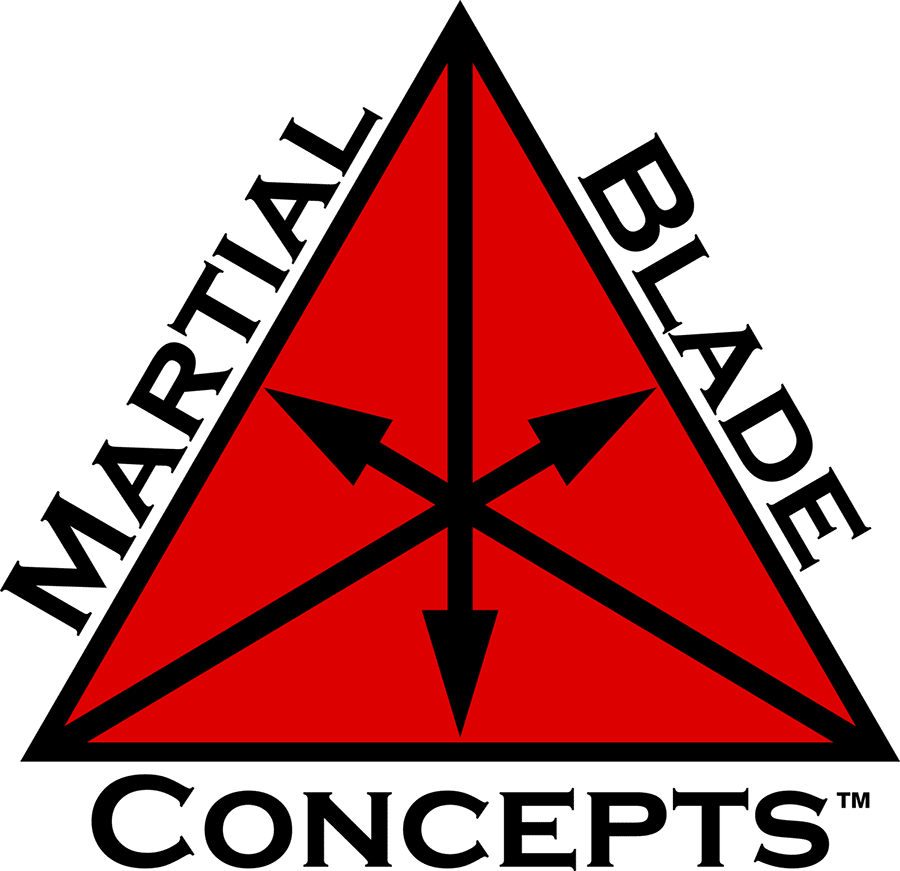Fighting Off a Gun Grab: Do You Need a Fixed Blade Knife?
January 5th, 2022
6 minute read
This article is directed towards civilian concealed carry practitioners. As concealed carry users multiply, the number of firearms in circulation expands increasing odds that “gun grabs” will take place. Law enforcement personnel have been aware of this danger for decades, thus the creation of retention holsters and training curriculum that focuses on gun grab scenarios.
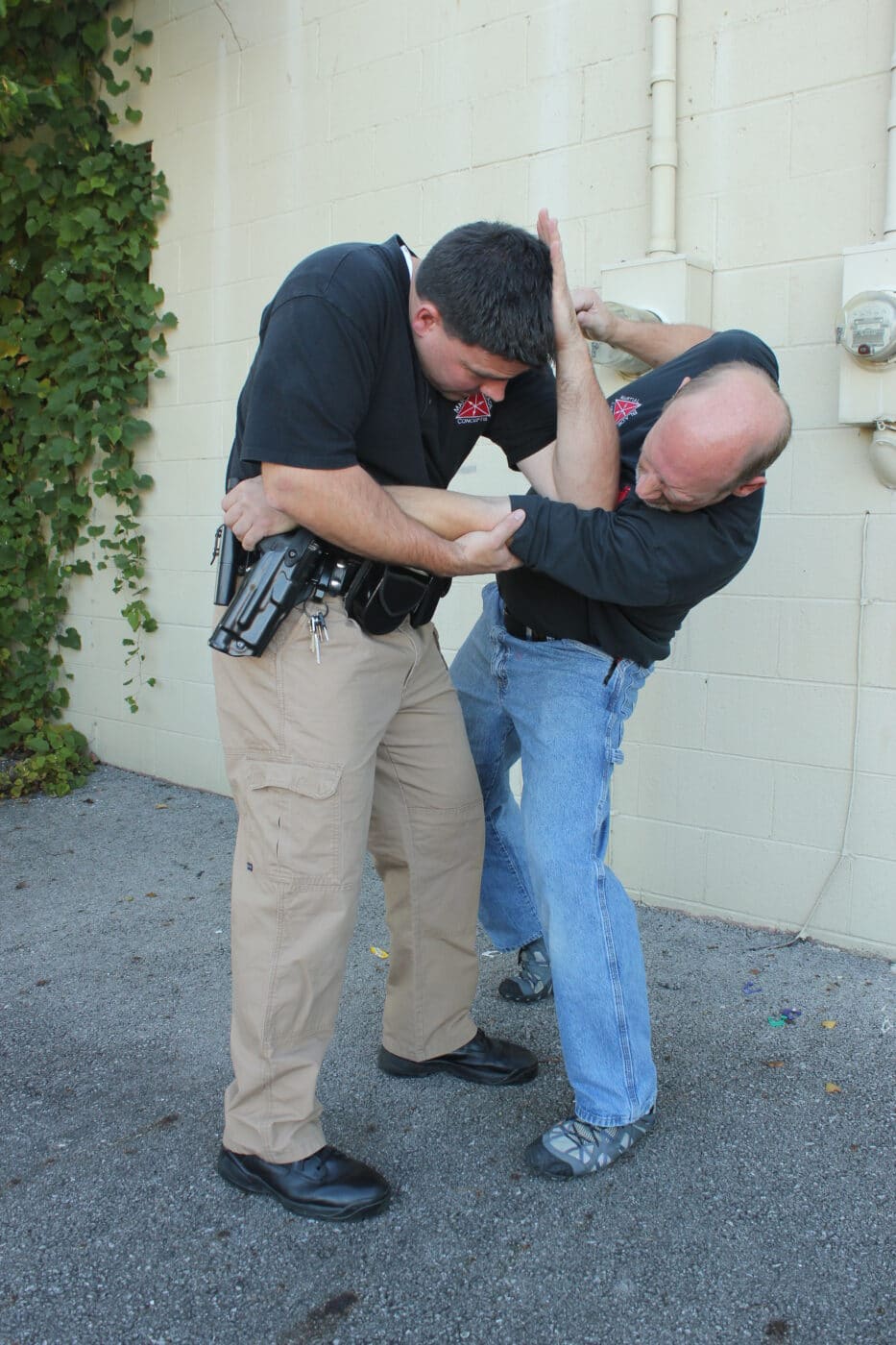
For example, the Lindell Handgun Retention system has been around since 1970 when Jim Lindell was hired by the Kansas City (Missouri) Police Department to supervise its self-defense training. Officer survival mindset training is also a crucial component. These training and mindset lessons are equally applicable to civilians when it comes to weapon retention.
The Same, But Different
Unlike law enforcement, civilian concealed carriers are not tasked with actively confronting/engaging hostile personnel, making arrests. This mitigates some of the gun grab concerns. It cannot be stressed enough that civilian weapon retention starts with proper concealment habits. Concealed carry is most likely compromised by “printing” or carelessness, with a criminal seeing opportunity to upgrade their own arsenal. Situational awareness is paramount.
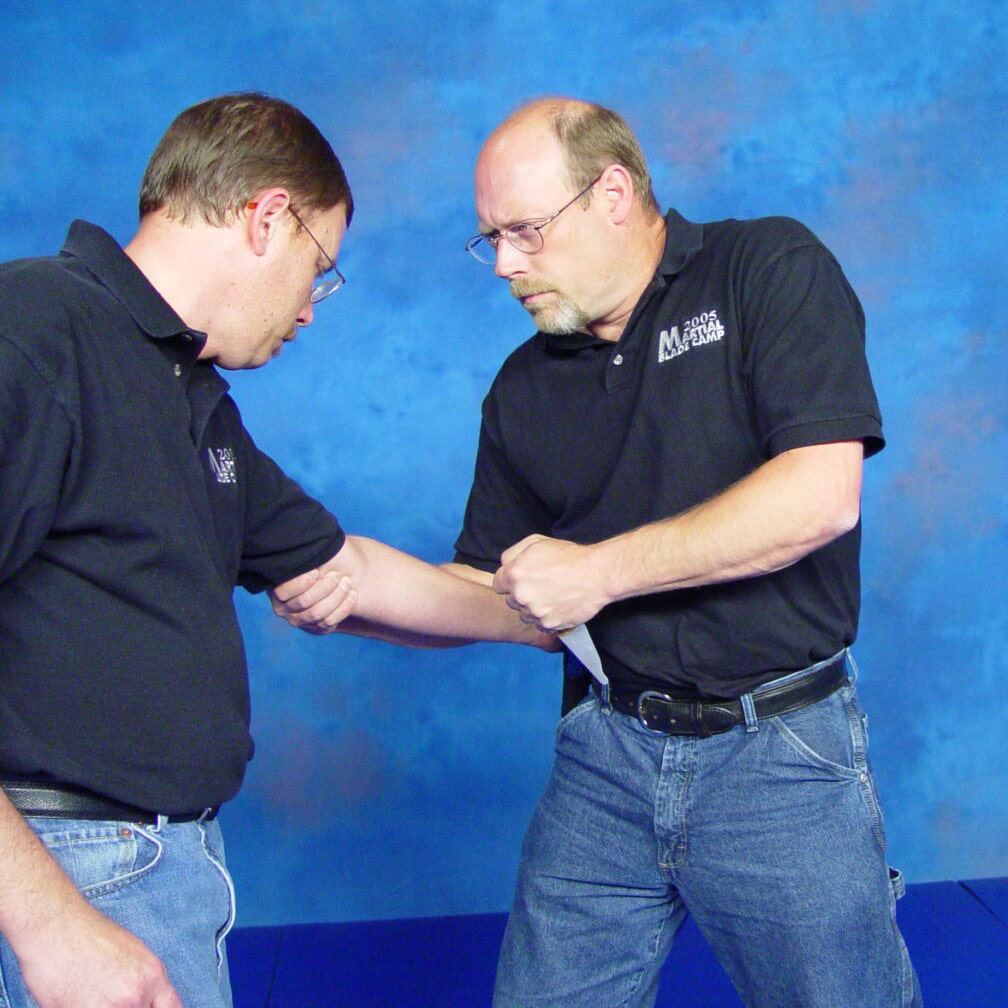
Many CCW enthusiasts carry a folding knife. A quick look at all the pocket clips adorning pants would seem to confirm this. However, in my mind, this is not the answer/solution for fending off a violent gun grab attempt.
Thinking you can bring a folder into action with your “strong” hand, let alone your “weak” hand, while engaged in an active struggle retaining your firearm, is optimistic. Personal experience and listening to subject matter experts points to a fixed-edged blade on the opposite side of your firearm as the best option.
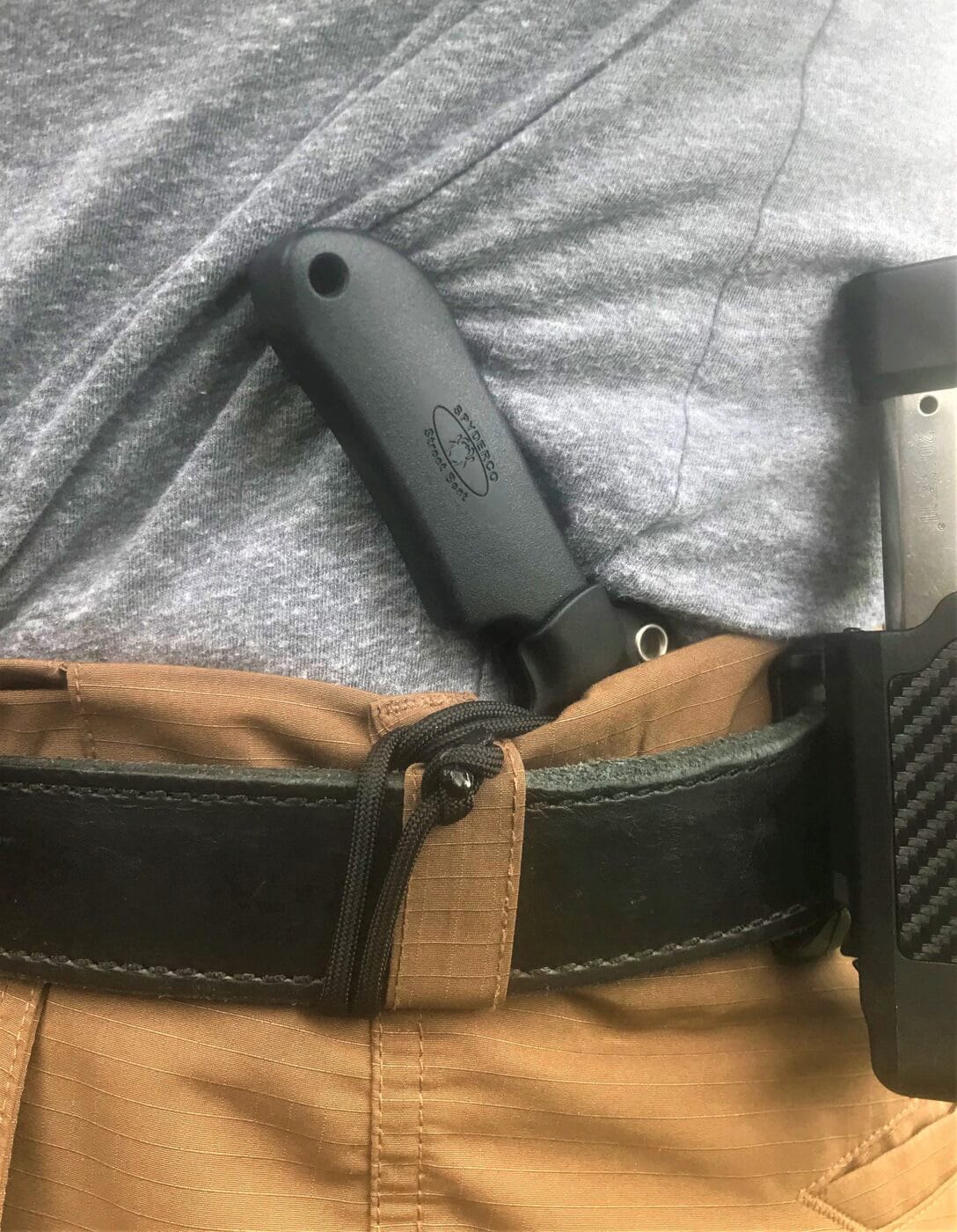
The addition of a fixed blade to your everyday carry is a key first step. Thinking equipment alone without training will suffice, however, is more ill-placed optimism. Just like firearms, edged weapons require ongoing training to be effective when you need it most — if not even more. But choosing the right blade is a solid first step.
Some Options
Of late, I have been exploring compact fixed blades from Spyderco — the ARK FRN, Ronin2 and Street Beat.
The compact nature of the Spyderco ARK FRN is both a strength and a weakness. The ARK FRN blade measures 2.56” with an overall length of just under 5”. The compact ARK FRN weighs only 2 oz., including sheath excels in discrete portability; however, the robustness of thrust/cut correlates to handle and blade size.
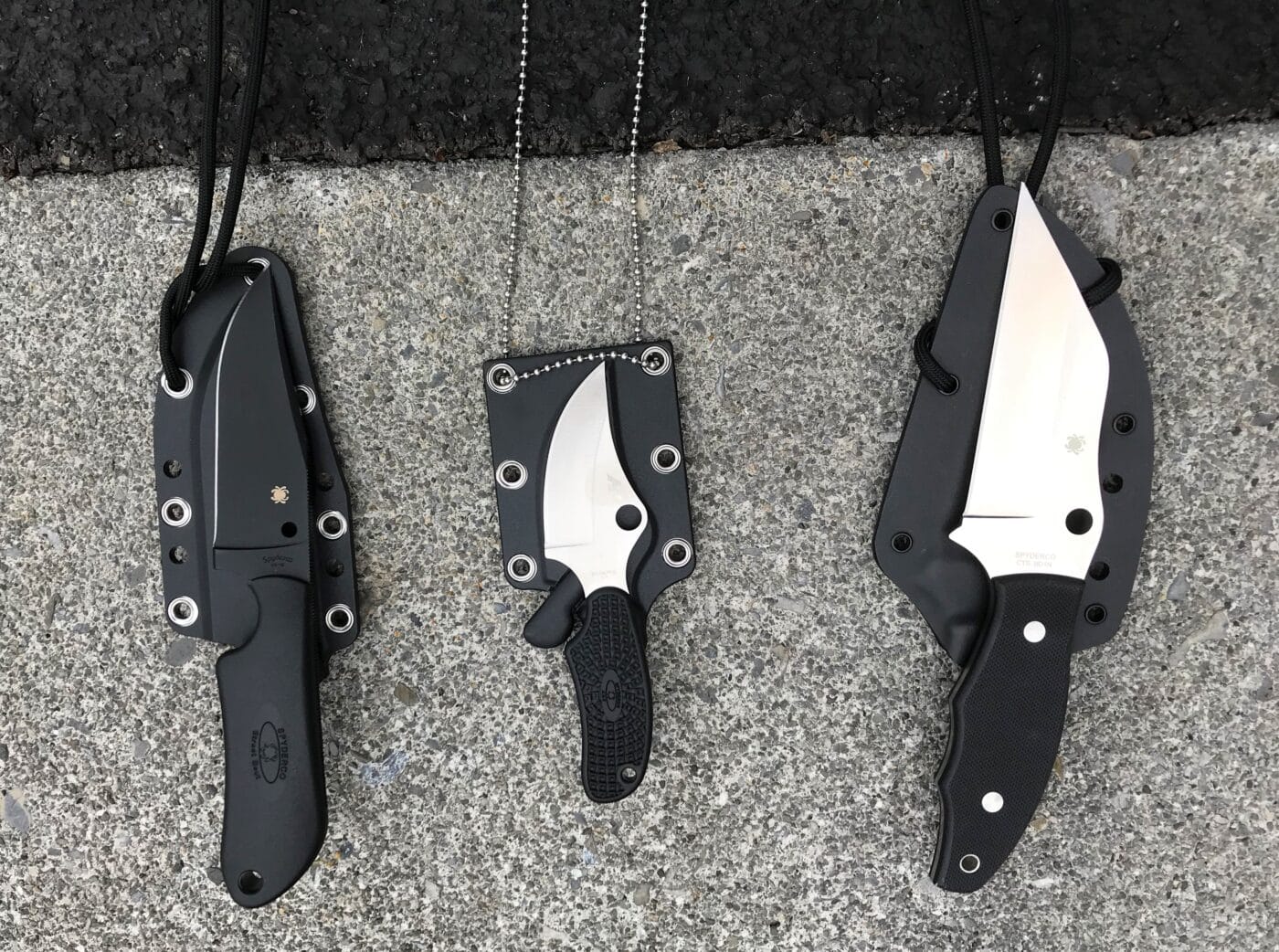
To be frank, the ARK FRN is not the best tool for our purposes of cutting someone off you during an assault. Many times, showing what doesn’t work illustrates what someone is trying to say just as well as positive examples. The ARK FRN has its place serving as the ultimate “sucker punch” when an adversary is convinced there is no way a weapon is present. However, a larger more robust fixed blade is probably the way to go for our task.
The other two Spyderco offerings — Ronin2 and Street Beat — have proven themselves as very worthy candidates. The Spyderco Ronin2 features a 4” Wharncliffe profile blade. It is based on an earlier Michael Janich design.
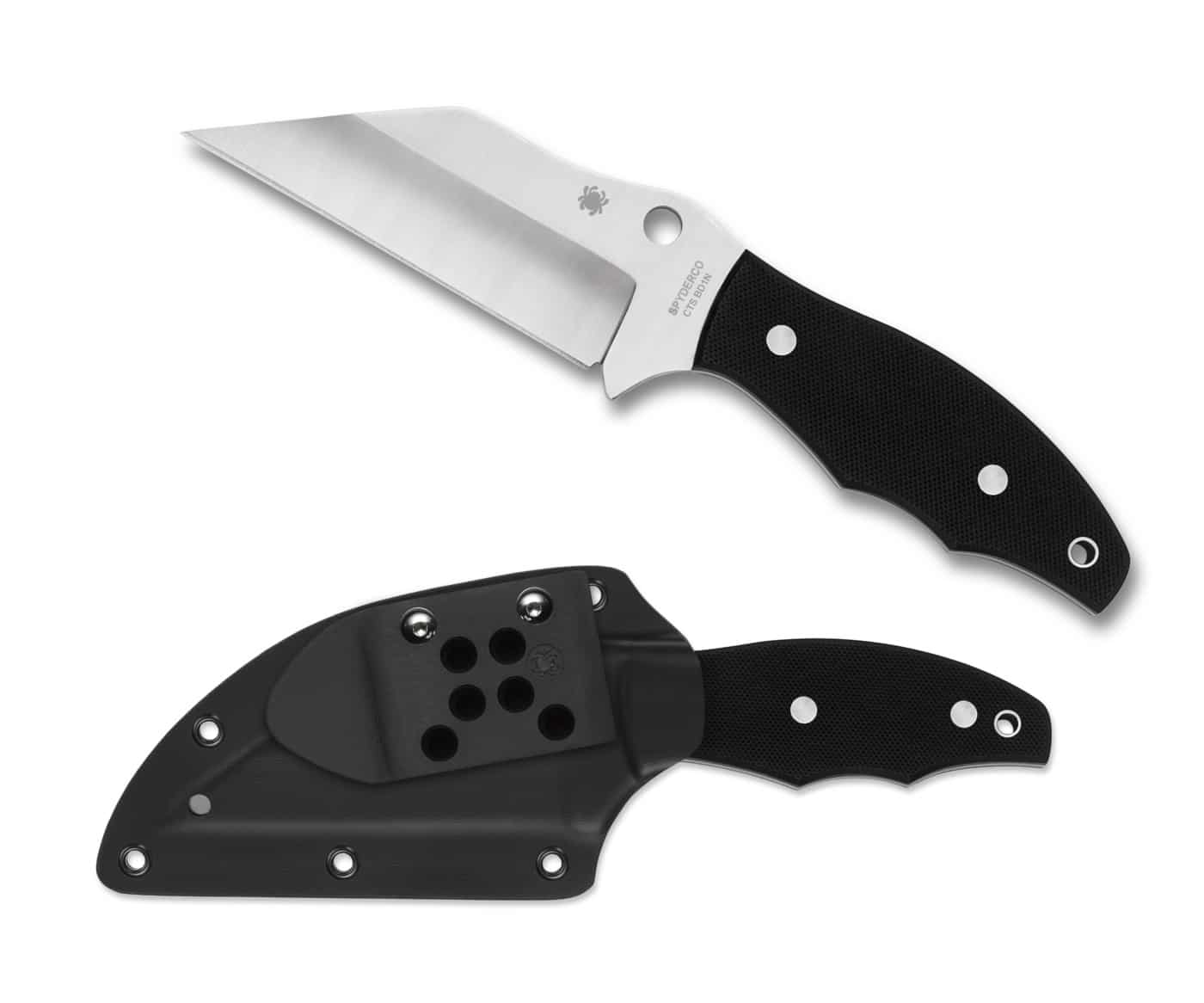
The Ronin2’s overall length is 7.84” with a skeletonized full tang capped by thin textured black G-10 scales that guarantee a positive grip. The Ronin2’s Wharncliffe blade style is typified by a straight cutting edge with the spine rounded convexly downward to meet the point. Once the blade edge makes contact, it stays there, regardless of whether initial contact was at the tip or midway down the blade.
In addition, the large “wedge” that is apparent on the top forward edge of the Ronin2 blade enhances the penetration of the blade when stabbing. With a Wharncliffe-style blade, one can dump power into the cut regardless of whether they are slashing or stabbing.
The Spyderco Street Beat is a compact Bowie-style knife patterned on Fred Perrin’s design work. The blade is 3.5” with an overall length of just over 7”. A non-reflective black ceramic coating covers the blade. The ergonomic handle is injection molded directly onto to the blade’s tang. Perrin’s signature index finger choil helps to keep the user’s hand locked in place during use. This is further supported by textured grooves on the handle and blade spine for increased thumb purchase — important for control.
A significant characteristic of the Bowie design is the clip point. This brings the tip of the blade lower than the spine for better control. The clip point profile maintains a sharp, stabbing point. Most Bowie knives have a bevel ground along the top of the “clip”. This is referred to as a false edge as from a distance it looks sharpened. It serves to take metal away from the point, streamlining the tip and thus enhancing the penetration capability of the blade.
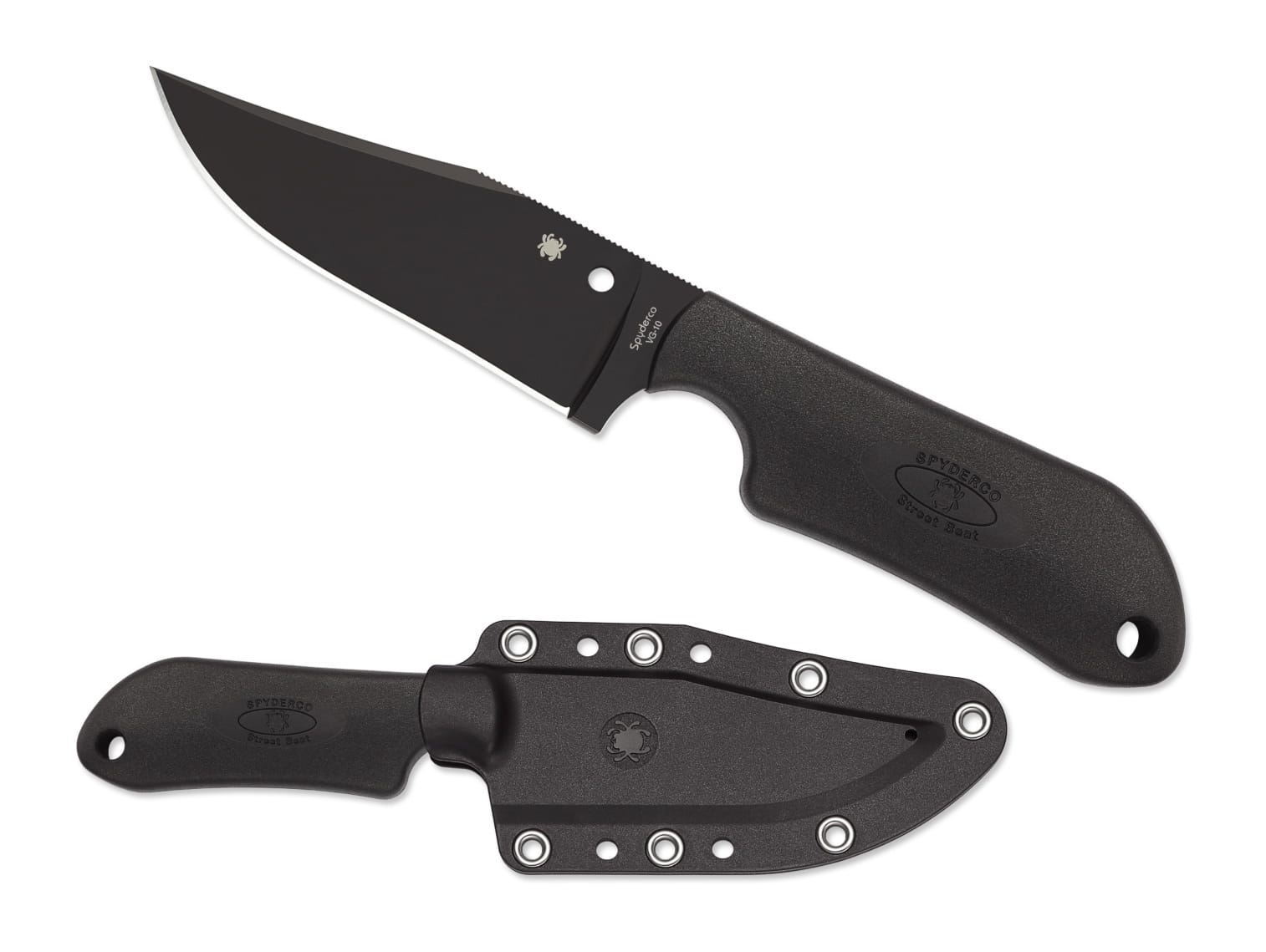
The Ronin2 and Street Beat both arrive with sheaths featuring multi-adjustable G-Clip attachment. The G-Clip is configurable for vertical, horizontal, or diagonally canted carry and can be attached to both faces of the sheaths.
A better way to carry small-fixed blades is static-line cord carry (550-cord for example). I was introduced to this method during a Michael Janich Martial Blade Concepts (MBC) seminar taken years ago. You attach the static cord to your sheath, then you loop it onto/around your belt. This can be accomplished without even removing your belt with a simple pass through girth hitch. Now, you tuck the sheathed blade into your waistline like you would an IWB holster with the handle exposed and oriented the way you want it for easy deployment.
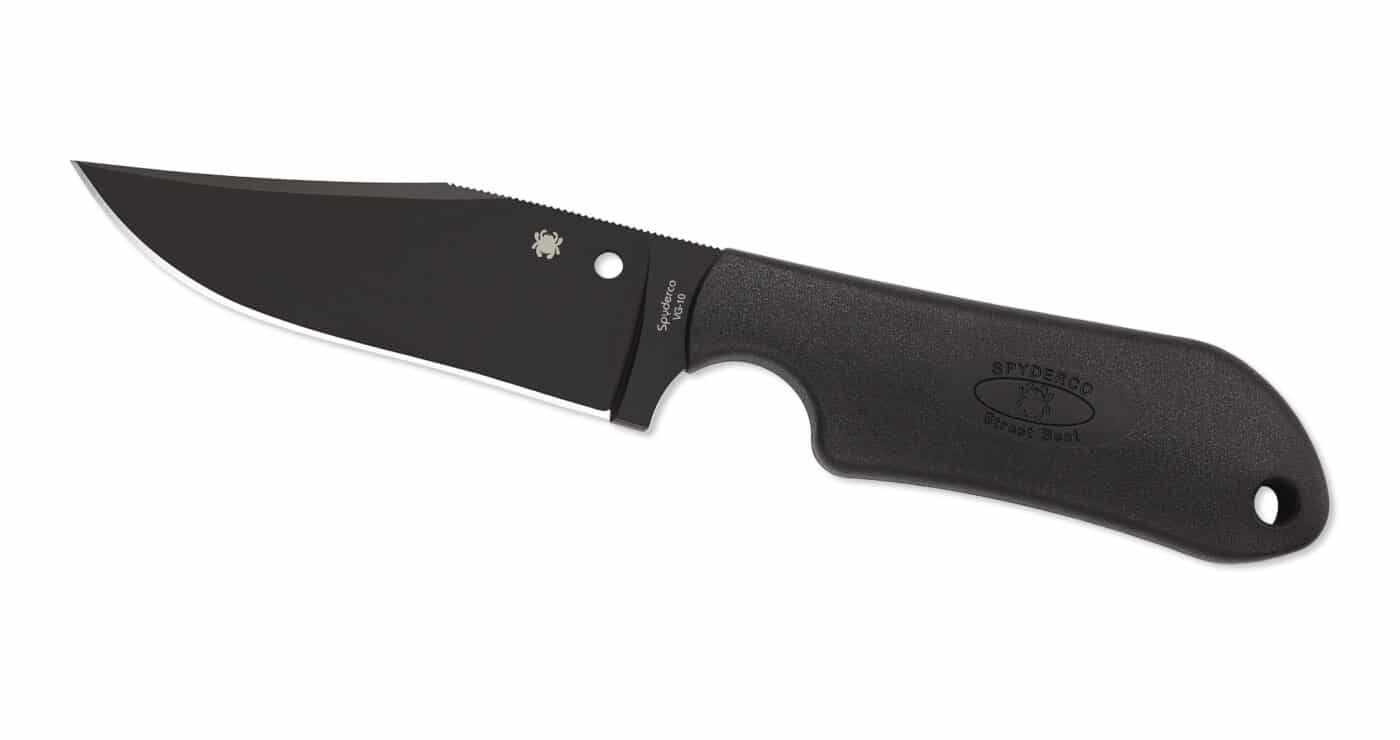
Along with Martial MBC duties, Janich is Special Projects Coordinator for Spyderco. His suggestions regarding applicable fixed blades are reflected in the Spyderco Ronin2 and Street Beat contained in this article.
Conclusion
Fending off a gun grab is a life-or-death struggle. Thoughts of fancy moves or an easy path to success after a couple of slashes or stabs are unrealistic. Primal aggressiveness will be your best plan, hopefully, supported by training to further increase odds in your favor.
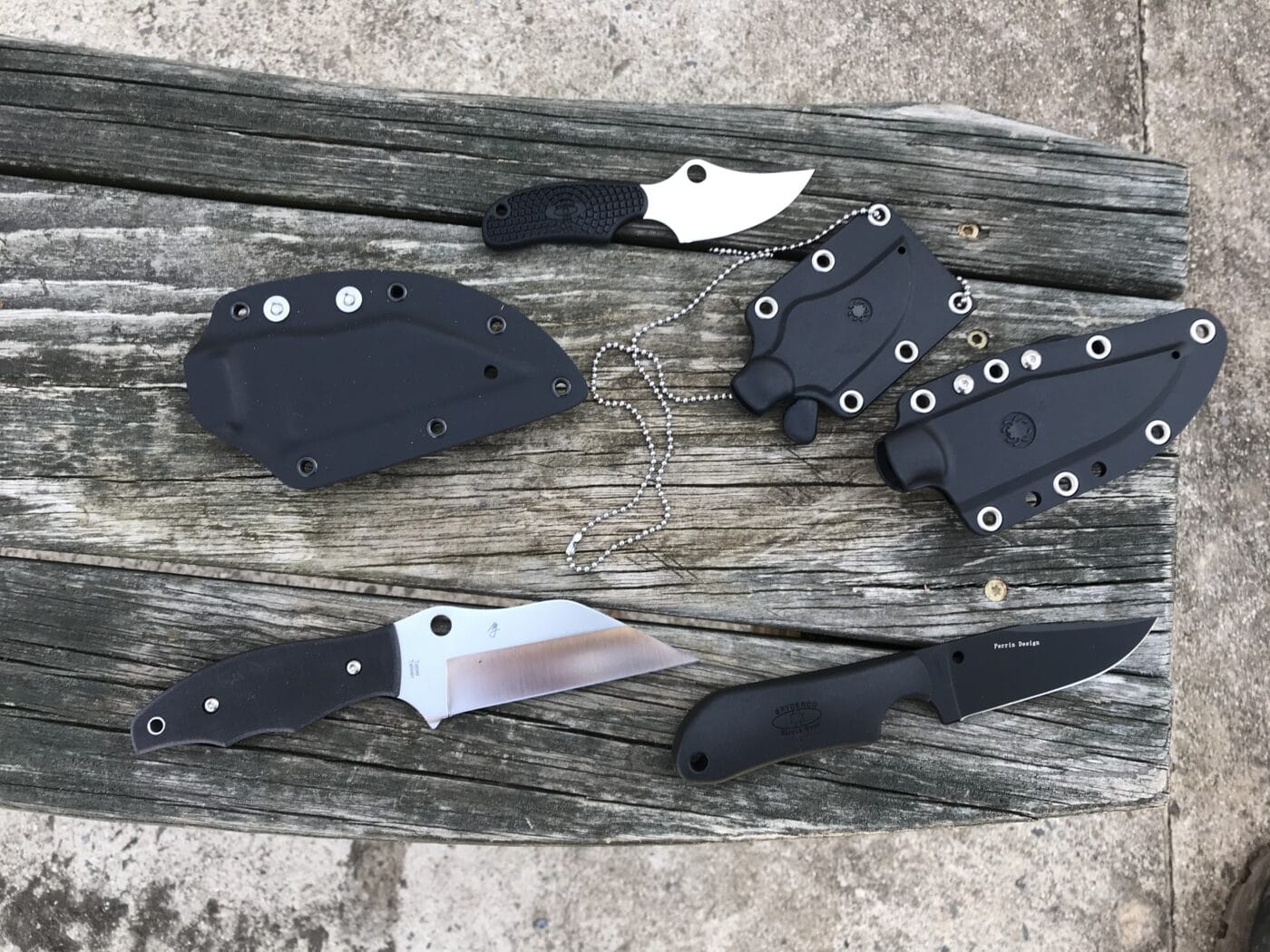
Open-hand and blade skills are an important component of personal defense proficiency. While it would be optimum to be a trained martial artist with years of dedicated effort emphasizing combatives, unfortunately, this is not the case for most of us. However, choosing the right blade is a solid starting point.
I’m not going to offer an absolute recommendation of a specific knife — just guidance based on my journey. I will advocate a fixed blade accessible from the “weak” side optimally by either hand. The static cord carry method is a facilitator of this by greatly increasing the comfort, flexibility, and convenience of carrying a fixed blade.
I urge readers to make the commitment of being their own advocate by diligently carrying a firearm along with an increased focus on overall personal defense best practices. This means actively seeking training on a regular basis and giving thought to adding a fixed blade to your everyday repertoire.
Editor’s Note: Please be sure to check out The Armory Life Forum, where you can comment about our daily articles, as well as just talk guns and gear. Click the “Go To Forum Thread” link below to jump in and discuss this article and much more!
Join the Discussion
Featured in this article
Continue Reading
Did you enjoy this article?

 197
197





